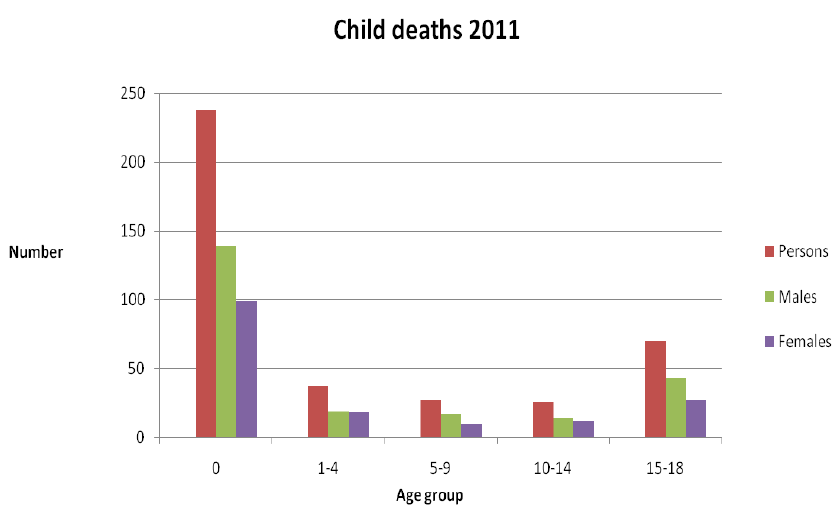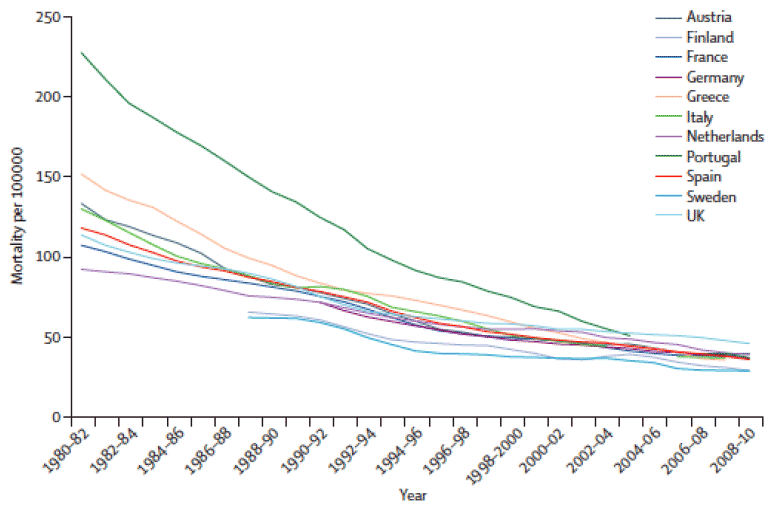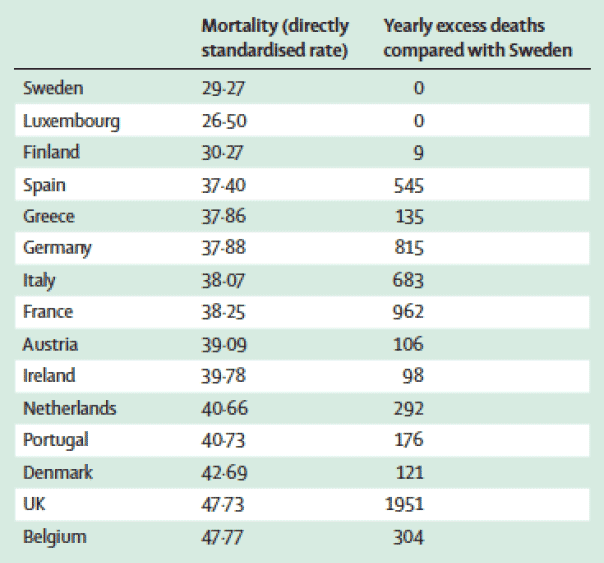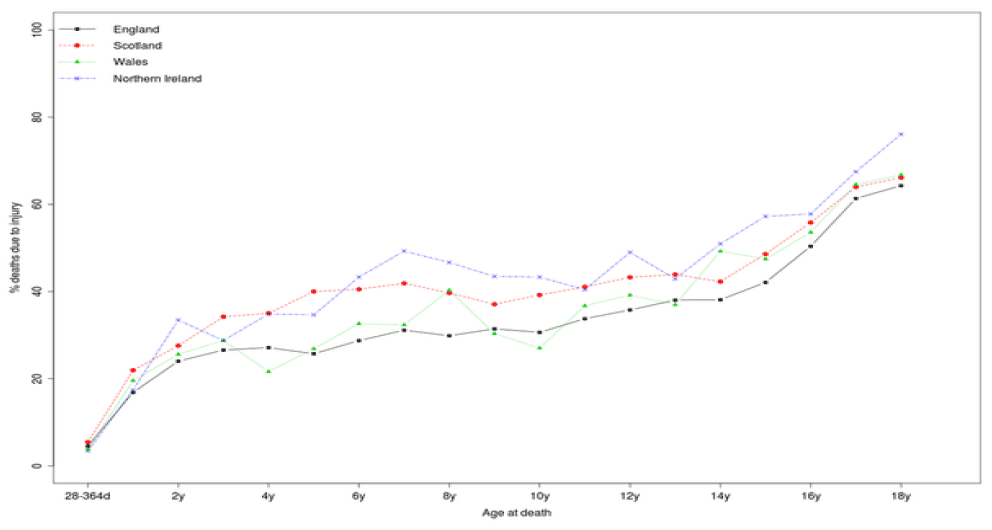Child Death Review Report : Scottish Government Child Death Review Working Group
A report by a Scottish Government short-life working group which explored current practice in Scotland and considered whether Scotland should introduce a national collaborative multi-agency system for reviewing the circumstances surrounding the death of a child.
Epidemiology of child deaths in Scotland
10. In Scotland each year, there are roughly between 350 and 450 deaths of people aged under 18, with most of them occurring in children aged under 1. Of the other age-groups, 15-18 has the largest number of deaths: each of the 1-4, 5-9 and 10-14 age-groups has relatively few deaths (Figure 1).
Figure 1: Child deaths in Scotland 2011, by sex.

Source: GROS4
11. Causes of death in 0-1 age range bracket are usually related to prematurity and congenital abnormalities and causes in the 15-18 age range relate largely to trauma including road traffic accidents and teenage suicide.
12. Child mortality rates fare particularly poorly in the UK compared to the rest of Europe. In the UNICEF report "Child Wellbeing in rich countries" (2013)5 compared the UK with all other European countries, indicating that the UK is in the bottom one third for infant mortality rates.
13. A recent report in The Lancet6 also published child mortality data for the UK and other western European countries from 1980 onwards. While it is immediately obvious that there have been falls in child mortality over the last 30 years, there are readily apparent disparities in those rates between countries (figure 2).
Figure 2: Trends in mortality in children aged 0-14 years in 11 European countries, 1980-2010

Trends in mortality in children aged 0-14 years in 11 European countries, 1980-2010
Source: Lancet 2013: 381:1224-34: 6-12 April 20136 WHO Mortality Database, 2012. Data are directly standardised rates.
14. Taking Sweden as a base-line with the lowest child mortality, the UK has the greatest 'excess mortality' of any country in western Europe (figure 3). By way of example the UK has five times the mortality rate for asthma compared to either Sweden, Portugal, Finland, Italy, Austria, Germany or Spain and there has been no fall in 'intentional injury' including assaults and suicides in the UK in the last 30 years.
Figure 3: Child mortality rates in the 15 pre-2004 countries of the European Union and excess child deaths compared with Sweden

Source: Lancet 2013: 381:1224-34: 6-12 April 20137 WHO Mortality Database, 2012.2 Directly standardised rate data show all-cause mortality per 100 000 children aged 0-14 years and are 5 year means for 2006-10, except for France and Luxembourg (2005-09), Denmark (2002-06), Belgium (1998-99; 2004-06), Italy (2003; 2006-09); and Portugal (2003; 2007-10). Data for excess deaths are absolute numbers. An estimated 6198 deaths would have been avoided if the child mortality rate across the 15 pre-2004 countries of the European Union was the same as that in Sweden.
15. A recent report by Healthcare Quality Improvement Partnership (HQIP) Clinical Outcome Review Programme (CORP): Child Health confirmed there are variations too between the 4 nations: Scotland has the greatest 'excess mortality' from injuries over the age of 10 years with 146 additional deaths compared to England (figure 4).8
Figure 4: Percentage of child deaths due to injury by country and age at death, 1980-2010

Source: PLoS (Public Library of Science)
16. Child deaths are more common in areas of socio-economic deprivation. Children from deprived areas and from families with low socioeconomic status have higher rates of child mortality and death from injury. 9,10,11,12. Pre-term delivery is strongly associated with socio-economic deprivation and with infant mortality, and the gap in the rate of preterm births between different socio-economic groupings has widened over the last four decades in the UK.
Contact
Email: Mary Sloan
There is a problem
Thanks for your feedback